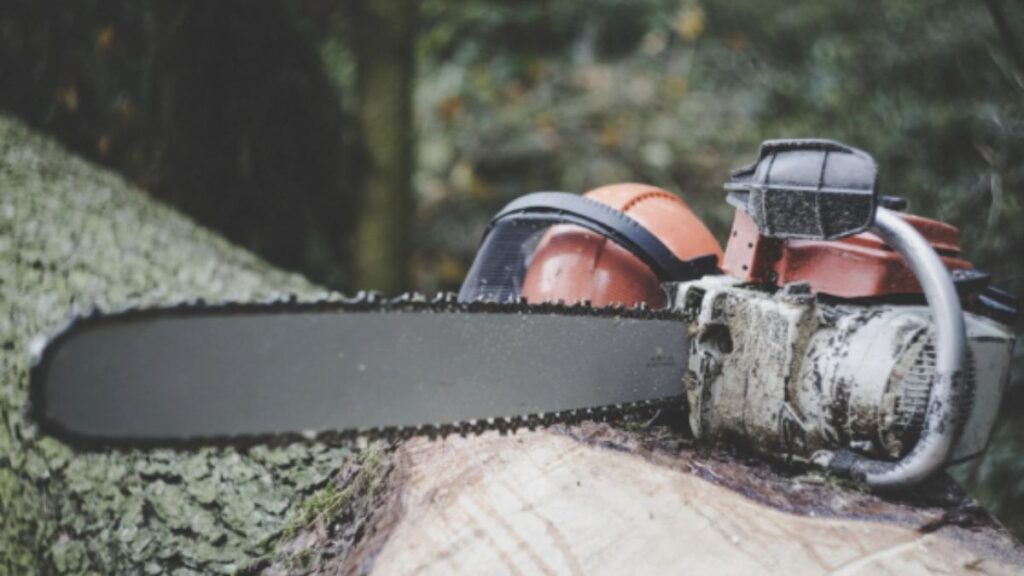A chainsaw is a powerful tool that can make cutting trees, firewood, and other heavy-duty tasks much easier. Whether you’re a homeowner looking to manage backyard maintenance, a farmer needing to clear land, or a professional landscaper handling large-scale projects, choosing the right chainsaw is essential. With a wide range of chainsaws available on the market, understanding the key features, types, and considerations will help you find the perfect one for your needs.
Selecting the wrong chainsaw can lead to inefficiency, increased maintenance costs, and potential safety hazards. Many buyers make the mistake of purchasing a chainsaw based solely on price or size, only to find that it lacks the necessary power or features. By considering factors such as engine type, bar length, power output, and safety features, you can ensure that your investment is both practical and cost-effective.
Understanding the Different Types of Chainsaws
Chainsaws come in various types, each designed for specific uses and levels of expertise. The three main categories are gas-powered, electric, and battery-operated chainsaws. Understanding the differences between these options will help you determine which one suits your needs best.
Gas-powered chainsaws are the most powerful and are ideal for heavy-duty cutting tasks, such as felling trees or cutting thick logs. They offer mobility since they are not restricted by a power cord. However, they require regular maintenance, including fuel refilling, air filter cleaning, and spark plug replacement. Electric chainsaws, such as Worx electric chainsaws, are an excellent choice for homeowners and casual users. They are quieter, require less maintenance, and start easily with the push of a button. These chainsaws are perfect for light to medium cutting tasks like trimming branches, cutting firewood, or occasional yard work.
Battery-operated chainsaws provide similar benefits to electric models but offer enhanced portability without being tethered to a power source. They are convenient for quick jobs but may lack the power needed for heavy-duty applications. Battery life and charging times should be considered when choosing this type.
Choosing the Right Bar Length for Your Needs
The bar length of a chainsaw determines the size of wood it can cut in a single pass. A longer bar can handle larger logs, but it also makes the chainsaw heavier and more challenging to control. Choosing the right bar length depends on your intended use.
Chainsaws with bar lengths between 10 to 14 inches are ideal for pruning and light cutting tasks. These smaller models are easy to maneuver and suitable for beginners. Bar lengths between 16 to 20 inches are better for cutting firewood and medium-sized trees. Professionals or those working on large projects may require chainsaws with bars exceeding 20 inches for felling large trees.
While longer bars increase cutting capacity, they also pose greater safety risks. If you’re a beginner or occasional user, selecting a mid-range bar length is recommended for improved control and safety.
Evaluating Chainsaw Power and Performance
A chainsaw’s power output determines its efficiency in cutting through different materials. Gas-powered chainsaws are measured in cubic centimeters (cc), with higher cc values indicating greater power. Electric and battery-operated chainsaws are rated in amps or volts.
For general yard maintenance, a chainsaw with a power rating of 8 to 14 amps (for electric models) or 30 to 45 cc (for gas models) is sufficient. Heavy-duty applications may require gas-powered chainsaws with 50 cc or more.
Battery-operated chainsaws typically range from 20V to 80V, with higher voltage providing better performance. When selecting a chainsaw, consider the type of wood you’ll be cutting and the frequency of use to determine the necessary power level.
Safety Features to Look for in a Chainsaw
Chainsaws are powerful tools that require strict safety precautions to prevent accidents. Choosing a model with built-in safety features can significantly reduce the risk of injuries.
An automatic chain brake is a crucial safety feature that stops the chain if a sudden kickback occurs. Kickback happens when the chainsaw’s tip makes contact with an object, causing it to jerk back toward the user. A chain brake minimizes this risk by stopping the chain instantly.
Low-kickback chains and anti-vibration handles help improve stability and reduce user fatigue during prolonged use. A chain catcher is another essential feature that prevents the chain from flying off the bar in case of breakage.
Handguards, trigger locks, and easy-to-access emergency stop buttons provide additional layers of protection. Regardless of the safety features available, always wear protective gear, including gloves, goggles, and chainsaw chaps, when operating a chainsaw.
Maintenance and Longevity Considerations
Regular maintenance ensures that a chainsaw operates efficiently and lasts for years. Gas-powered models require the most maintenance, including fuel mixing, air filter cleaning, and spark plug replacements. Electric and battery-operated chainsaws need less maintenance but still require periodic chain lubrication and tension adjustments.
Sharpening the chain regularly is essential to maintain cutting performance and reduce strain on the motor. A dull chain can cause inefficient cuts and increase wear on the chainsaw’s engine. Checking for loose bolts and ensuring proper chain tension prevents operational hazards and prolongs the tool’s lifespan.
Proper storage also plays a role in maintaining a chainsaw. Keep it in a dry, secure location, and empty fuel tanks for gas-powered models before long-term storage to prevent residue buildup.

Selecting the right chainsaw involves considering power, bar length, safety features, and maintenance requirements. Gas, electric, and battery-operated models each offer unique benefits depending on the cutting tasks at hand. Whether you need a chainsaw for light yard work or heavy-duty tree cutting, understanding the essential features will help you make an informed purchase.
By choosing a high-quality chainsaw that matches your needs, you can ensure safety, efficiency, and long-term performance. Proper maintenance and responsible handling further enhance the tool’s lifespan, making it a valuable asset for home and professional use.







